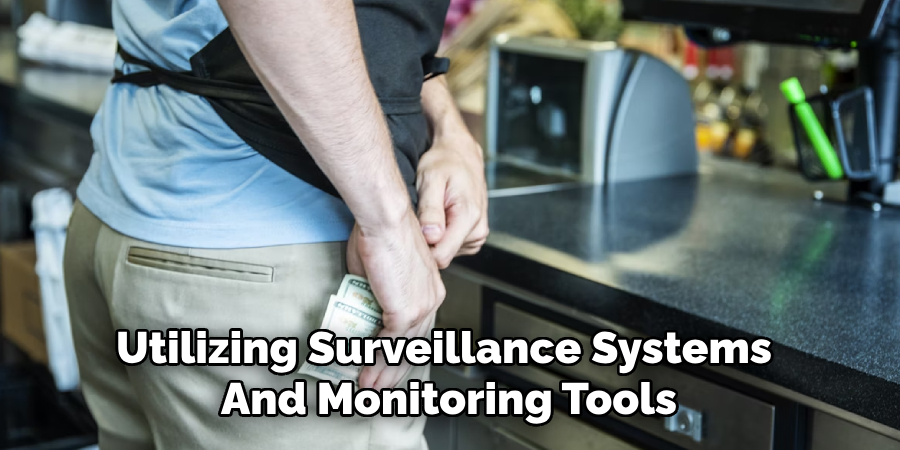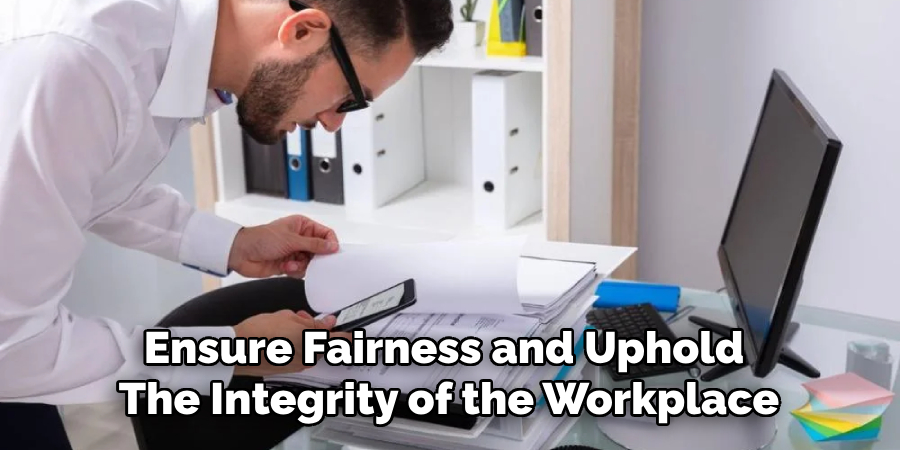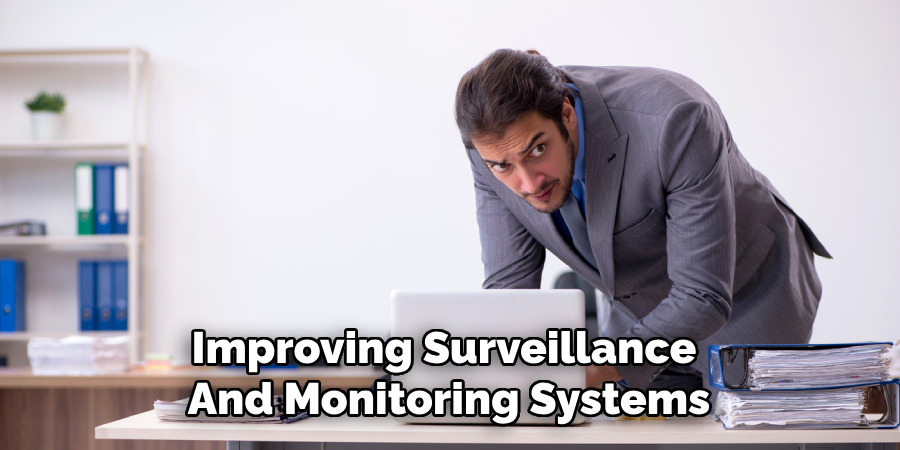Workplace theft encompasses a range of activities including stealing company property, embezzlement, and fraud. It can severely impact businesses, leading to significant financial losses, reduced employee morale, and a damaged reputation. Addressing theft promptly and effectively is crucial to maintaining a secure and trustworthy work environment.
This article provides a comprehensive guide on how to handle theft in the workplace, covering essential steps such as prevention, detection, and response. By implementing strict access controls, conducting thorough investigations, and ensuring compliance with legal and ethical standards, businesses can mitigate the risks associated with theft and foster a culture of integrity and accountability.

Preventing Workplace Theft
Preventing workplace theft begins with implementing strict access controls and security measures. Only ensuring that sensitive areas are restricted to authorized personnel can significantly reduce the theft risk. Advanced security measures such as surveillance cameras, biometric scanners, and secure entry systems can enhance overall security and deter potential offenders.
Conducting thorough background checks on employees before hiring is another essential step in preventing workplace theft. By verifying the employment history, criminal records, and references of potential hires, businesses can minimize the risk of employing individuals who may threaten company assets and integrity.
Establishing clear policies and procedures regarding theft is crucial. These policies should be communicated to all employees and outline the actions that constitute theft and the consequences of such actions. Having a transparent disciplinary system in place helps reinforce the company’s stance on theft and ensures consistency in handling incidents.
Providing comprehensive employee training on theft prevention and awareness is equally important. Regular training sessions can educate employees on the various forms of theft, how to recognize suspicious activities and the importance of reporting such activities. By fostering an environment of vigilance and responsibility, businesses can effectively reduce the occurrence of theft in the workplace.
How to Handle Theft in The Workplace: Detecting Theft
Detecting theft in the workplace requires a multifaceted approach that combines technology and employee engagement. Utilizing surveillance systems and monitoring tools, such as CCTV cameras and access control logs, can help businesses monitor critical areas and identify potential theft incidents in real-time. Advanced software can track and analyze patterns in employee behavior, enabling early detection of suspicious activities.
Conducting regular audits and inventory checks is another effective strategy for detecting theft. By systematically reviewing financial records, physical inventories, and asset logs, businesses can quickly identify discrepancies and investigate their causes. Routine audits ensure that any irregularities are promptly addressed and help maintain an accurate account of company assets.

Encouraging employees to report suspicious activities is crucial for the early detection of theft. Creating an environment where employees feel comfortable and supported in reporting concerns can significantly enhance internal security measures. Clear communication channels should be established for employees to report any unusual or suspicious behavior they observe.
Implementing anonymous reporting mechanisms further bolsters the detection process. Allowing employees to anonymously report theft-related concerns can lead to increased reporting rates, as it alleviates fear of retaliation. Implementing hotlines, suggestion boxes, or digital reporting tools can bring all potential incidents to management’s attention, creating a vigilant and proactive workforce.
How to Handle Theft in The Workplace: Responding to Theft Incidents
Responding to theft incidents in the workplace requires a calm, systematic approach to ensure proper handling and resolution. Here’s a step-by-step guide to effectively respond to a suspected theft incident:
- Documenting the Incident: Begin by meticulously documenting the theft incident. Record specific details such as the time, date, location, and items involved. Include any initial witness statements and observations. Comprehensive documentation is critical for future investigations and any potential legal proceedings.
- Notifying Appropriate Authorities: Immediately inform the relevant authorities within the organization. This typically includes security personnel, management, and the Human Resources (HR) department. Prompt notification ensures that the incident is assessed with the necessary gravity and resources are allocated for a thorough investigation.
- Securing the Affected Area: Protect and secure the area where the theft occurred. This may involve cordoning off the location to prevent tampering with evidence. Preserving the scene is crucial for collecting accurate evidence and understanding the specifics of the incident.
- Preserving Evidence: Gather and preserve all available evidence related to the theft. This could include surveillance footage, access logs, physical items, or digital records. Careful handling and storage of evidence are paramount to maintain its integrity throughout the investigation.
- Conducting a Thorough Investigation: Conduct a detailed investigation while respecting employee rights. This involves interviewing witnesses, reviewing evidence, and collaborating with relevant departments. Ensure that the investigation follows company policies and legal guidelines to avoid infringing on employee privacy and rights.
- Collaborating with Law Enforcement: If the theft is substantial or involves potential criminal activity, it is essential to collaborate with law enforcement authorities. Provide them with all collected evidence and documentation to assist in their investigation. Cooperation with law enforcement can help recover stolen property and hold perpetrators accountable.

By systematically addressing suspected theft incidents, businesses can maintain a secure and fair working environment, minimize losses, and uphold employee trust.
Addressing Employee Theft
Addressing employee theft effectively requires a structured and lawful approach to ensure fairness and uphold the integrity of the workplace. Interviewing and questioning employees suspected of involvement in theft should be conducted in accordance with company policies and legal guidelines. This process must be carried out with professionalism and respect for employee rights, ensuring that all interactions are transparent and documented.
Determining disciplinary actions based on investigation findings is critical. The disciplinary measures should be proportionate to the severity of the theft and in line with the company’s established policies. Depending on the particular circumstances and evidence gathered, options may range from written warnings and suspension to termination of employment. It’s essential that these decisions are made impartially and communicated clearly to the involved parties.

Providing opportunities for due process and fair treatment is paramount. Employees accused of theft should be allowed to respond to allegations and present their side of the story. This ensures that actions taken are based on a comprehensive understanding of the situation, not assumptions or incomplete information.
Lastly, considering the legal implications and employee rights throughout the process is crucial. Businesses must ensure that their response to theft aligns with employment laws and regulations to avoid potential lawsuits and protect the company’s reputation. Legal counsel may be sought to navigate complex situations and guarantee that all procedures comply with relevant legal standards.
Implementing Post-Incident Measures
In the aftermath of a theft incident, reviewing and updating security protocols and policies to address any identified vulnerabilities is essential. Regularly updating these protocols ensures that they remain effective against evolving threats and technological advancements. Enhancing training and awareness programs for employees is also paramount. Businesses can foster a more vigilant and knowledgeable workforce by educating staff about new security measures and the importance of adherence.
Improving surveillance and monitoring systems is another crucial step. Upgrading equipment and integrating advanced technologies like AI and machine learning can provide more accurate and comprehensive oversight. Finally, reinforcing a culture of integrity and accountability is key to preventing future incidents. Encouraging ethical behavior through clear communication, recognition programs, and a strong organizational ethos creates an environment where dishonesty is less likely to thrive. By implementing these post-incident measures, companies can significantly strengthen their security posture and mitigate the risk of future thefts.

Legal and Ethical Considerations
Understanding legal frameworks related to handling workplace theft is paramount for businesses to navigate the complex landscape of employment law and avoid legal pitfalls. Employers must familiarize themselves with local, state, and federal laws governing employee rights, privacy, and the processes for investigation and discipline. Respecting employee rights and privacy during investigations is crucial; this includes conducting thorough and fair inquiries without breaching confidentiality or resorting to invasive practices.
Ensuring compliance with employment laws and regulations involves adhering to standards set by bodies such as the Equal Employment Opportunity Commission (EEOC) and the National Labor Relations Board (NLRB) to prevent discrimination and unfair treatment. Businesses should also maintain transparent records of all proceedings and seek legal counsel when necessary to ensure that their responses to suspected theft are legally sound and ethically responsible.
Conclusion
Handling theft in the workplace requires a methodical and compliant approach. This includes identifying the theft, preserving evidence, conducting thorough investigations, and collaborating with law enforcement when necessary. Addressing employee theft involves fair and lawful interviews, proportionate disciplinary actions, and respecting due process. Post-incident measures, such as updating security protocols, enhancing employee training, improving surveillance systems, and fostering a culture of integrity, are vital to prevent future incidents.
Understanding and adhering to legal frameworks ensures that investigations respect employee rights and privacy, avoiding legal pitfalls. Ultimately, knowing “how to handle theft in the workplace” protects the company’s assets and maintains trust and morale among employees. A proactive stance on prevention, detection, and response ensures a secure and ethical workplace environment, safeguarding the organization’s reputation and fostering a culture of accountability and trust.
About
Safety Fic is a distinguished figure in the world of Diy design, with a decade of expertise creating innovative and sustainable Diy solutions. His professional focus lies in merging traditional craftsmanship with modern manufacturing techniques, fostering designs that are both practical and environmentally conscious. As the author of diy, Safety Fic delves into the art and science of Safety Fic-making, inspiring artisans and industry professionals alike.
Education RMIT University
(Melbourne, Australia) Associate Degree in Design (Safety Fic) Focus on sustainable design, industry-driven projects, and practical craftsmanship. Gained hands-on experience with traditional and digital manufacturing tools, such as CAD and CNC software.
Nottingham Trent University
(United Kingdom) Bachelor’s in diyfastly.com and Product Design (Honors) Specialized in product design with a focus on blending creativity with production techniques. Participated in industry projects, working with companies like John Lewis and Vitsoe to gain real-world insights.
Publications and Impact
In diy, Safety Fic his insights on indoor design processes, materials, and strategies for efficient production. His writing bridges the gap between artisan knowledge and modern industry needs, making it a must-read for both budding designers and seasoned professionals.
